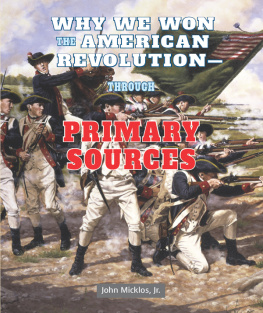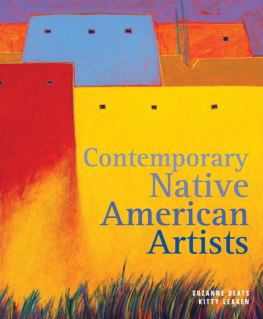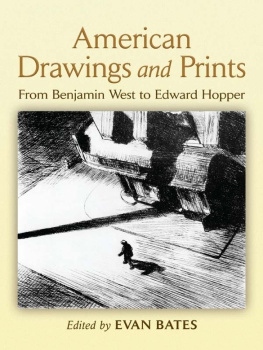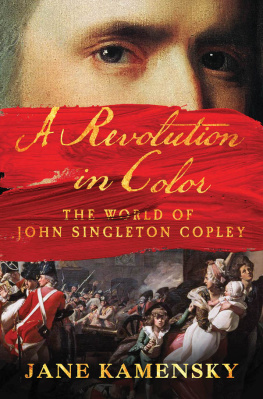BY THE SAME AUTHOR
Samuel F. B. Morse

Bloomsbury Press
An imprint of Bloomsbury Publishing Plc
| 1385 Broadway | 50 Bedford Square |
| New York, NY | London |
| 10018 | WC1B 3DP |
| USA | UK |
www.bloomsbury.com
BLOOMSBURY and the Diana logo are trademarks of Bloomsbury Publishing Plc
This electronic edition published in 2016 by Bloomsbury Publishing Plc
First published 2016
Paul Staiti 2016
All rights reserved
You may not copy, distribute, transmit, reproduce or otherwise make available this publication (or any part of it) in any form, or by any means (including without limitation electronic, digital, optical, mechanical, photocopying, printing, recording or otherwise), without the prior written permission of the publisher. Any person who does any unauthorised act in relation to this publication may be liable to criminal prosecution and civil claims for damages.
No responsibility for loss caused to any individual or organization acting on or refraining from action as a result of the material in this publication can be accepted by Bloomsbury or the author.
ISBN: 978-1-63286-465-9 (HB)
ISBN: 978-1-63286-467-3 (eBook)
Library of Congress cataloging-in-publication data is available.
Designed by Mary Austin Speaker
To find out more about our authors and their books please visit www.bloomsbury.com where you will find extracts, author interviews and details of forthcoming events, and to be the first to hear about latest releases and special offers, sign up for our newsletters.
Bloomsbury books may be purchased for business or promotional use. For information on bulk purchases please contact Macmillan Corporate and Premium Sales Department at
For Adrian and Ivana
Contents
Art and the American Revolution
Patriots in Revolutionary America were finally feeling optimistic in January of 1779. They had not forgotten the summer three years before when the British outmanned, outfought, and overwhelmed the Continental Army in New York, forcing General George Washington and his soldiers to flee, first to New Jersey and then to the banks of the Delaware River. They still had vivid memories of the invasion and occupation of Philadelphia, the capital city, in 1777, and the subsequent escape of the Second Continental Congress into the rural Pennsylvania countryside, followed by the wintering of Washingtons army at Valley Forge, where unremitting disease, exposure, and malnutrition ravaged the soldiers, killing 2,500. In those years, Americas future as an independent country was anything but auspicious.
But in 1778, history seemed to be turning in the Patriots direction. Benjamin Franklin successfully persuaded France to forge a powerful military alliance committing the Versailles court to make all the efforts in its Power to uphold the liberty, sovereignty, and independence of the United States. That opened the doors to the formidable French army and navy, laden with troops, commanders, and cannons, as well as an ancient and active hatred of Britain. Fearing this new alliance would escalate the war into a global conflict, the British evacuated their stronghold in Philadelphia and hastily sent envoys to the Continental Congress to sue for peace. In June of 1778, Washington broke camp at Valley Forge and took back Philadelphia. In November, a freshly buoyant Congress rejected the British peace overture and declared that from then on any settlement of the war would have to be on Americas terms.
Sensing the tide of war had shifted in the northern states, Pennsylvania passed a resolution on January 18, 1779, to honor those who have rendered their country distinguished services, by preserving their resemblances in statues and paintings. This, the Supreme Executive Council added, was the sort of thing the wisest, freest and bravest nations do in their most virtuous times. Seizing the moment, they appropriated money for a life-size, full-length portrait of Washington, the commander-in-chief, to be installed in the Council Chamber of the Pennsylvania State House, now Independence Hall.
The portraitthe first piece of public art in the United States would be an enduring acknowledgment of how much the liberty, safety and happiness of America in general, and of Pennsylvania in particular, is owing to His Excellency General WASHINGTON and the brave men under his command.
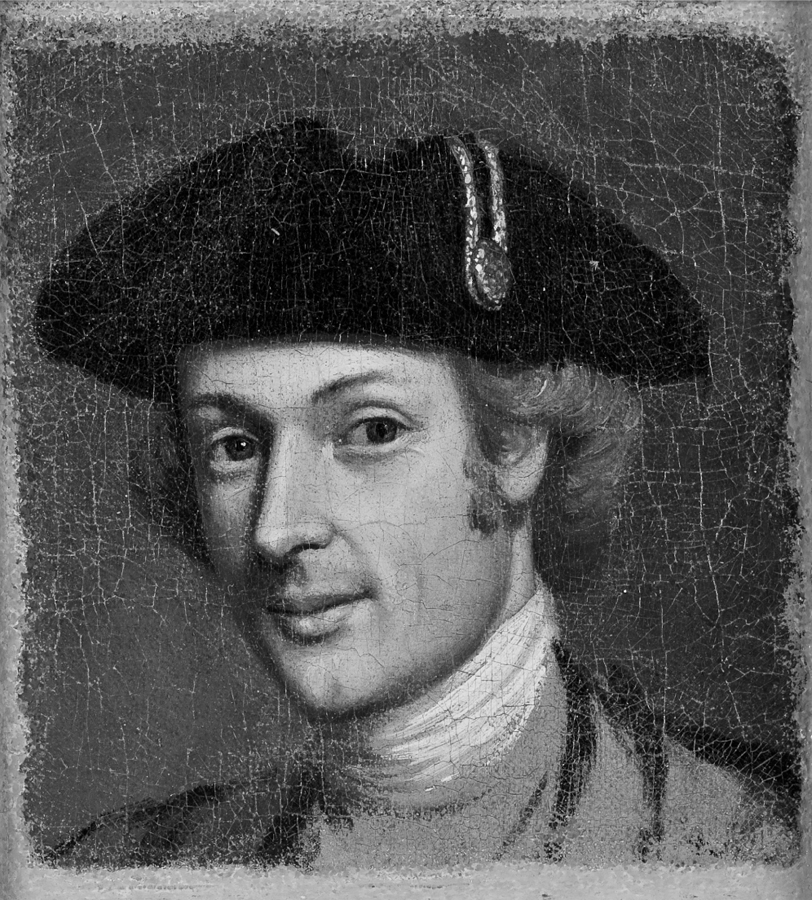
Charles Willson Peale, Self-Portrait, 177778
The person to be entrusted with carrying out the commission was Charles Willson Peale of Philadelphia. Painter, militiaman, assemblyman, and ardent Patriot, Peale had impeccable credentials for the job, both as an artist and as a political and military man. He had not only fought at the Battle of Princeton in 1777, but also had visited Valley Forge, where he painted himself looking remarkably cheerful, given the hunger, disease, and despair afflicting the troops that winter. After Washington reclaimed Philadelphia in 1778, Peale was put in charge of identifying Loyalists in the city and then confiscating their estates, sometimes in a heartless way. He was so hated by some factions in the city that during the last two years of the war he had to walk through the streets with a cane made of seasoned ash, named Hercules, so that he could protect himself from assault.
Peales credentials as an accomplished artist were equally impressive: three years of study under Benjamin West, the distinguished American painter in London; dozens of portraits of Continental officers, many taken at camp-side; and artistic commissions from congressional leaders, including John Hancock and Samuel Adams.
For the State House portrait, Washington made himself available to Peale for sittings between January 20 and February 2, 1779, at which point the general moved to his military headquarters in Middlebrook, New Jersey. Over the course of those two weeks Peale had to work on the eight-foot portrait at lightning speed. And he had to ask himself, and ask Washington, what the picture should show. The choices were endless. Washington might be depicted in the midst of a battle, and if so, there would be the question of which one. Or he could be seen far from the battlefield, perhaps at field headquarters, or appearing before Congress. There were ample reasons to portray him as a fearless warrior leading troops, but as compelling, he could simply be seen as an exceptional person.
Peale and Washington must have come to an agreement to focus on the decisive Battle of Princeton, which took place a week after the crossing of the Delaware and the Battle of Trenton. One of the most brutal scenes of combat during the Revolution, Princeton was fought on January 3, 1777, and it was won because Washington rallied the demoralized troops by coming to the front and then marching his horse directly into the line of fire. When it was over, the battle acquired special significance, not only because the British lost that day but also because it proved that their army was not invincible. Princeton was the first glimmer that the Revolution was winnable.
A decision also needed to be made on what aspects of Washingtons character Peale should emphasize and what messages the portrait ought to broadcast. Since it would be put on display in a building at the heart of American independence, Peale needed to demonstrate the new concept of leadership in a republic. He did that by rejecting the climactic moment when Washington thrust himself into the battle, and emphasizing instead the aftermath of victory when Washingtons inner qualities were most visible. Approachable, knowable, understated, calm, benevolent, and slightly ungainly, Peales Washington looks directly at his audience and comes across as a man of easygoing refinement and complete confidence.


